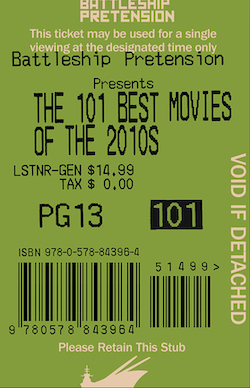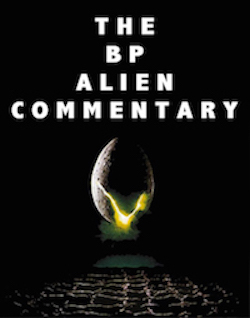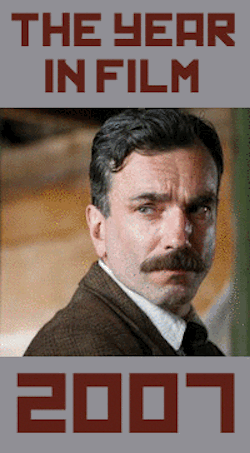Oscar Bait: It’s Getting Old, by Alexander Miller
As Oscar season is upon us, we can both air our excitement and roll our eyes at the newly presented slew of prestige films. If you can name a season after an advertising pattern for garnering Academy Awards, then it’s not hard to see that studios and producers will tailor their films for Oscar season than refine an original creation. Though the term “Oscar Bait” is hardly new, the awareness around the unflattering label doesn’t seem to curb the output of lazily groomed, one-dimensional movies that fall into what might as well be a new subgenre that permeates the film industry.
We all know that moviemaking is a business and Hollywood traffics a lot of it; but there’s always been room in all that business for some ingenuity along the way. When the lunatics of the new Hollywood took over the asylum, spectacles like Hello, Dolly! were nominated next to Midnight Cowboy for best picture. After Schlesinger’s controversial x-rated film won best picture, big studio pictures were no longer relevant. Artistry & craftsmanship replaced sanitized extravagance, and we’ve been thankful since. This turning point in film brought us Coppola, Friedkin, Bogdanovich, Scorsese, Rafelson, Hopper, Hellman, Jaglom, Pollack, Spielberg, Lucas, Schlesinger, Malick, and basically everyone who is important in modern cinema. Ironically, it was a young Michael Cimino’s Oscar-winning The Deer Hunter that represents an early sign of Oscar bait syndrome, as it was groomed for awards after critics screenings. The cruel twist of fate is almost comical seeing as it’s looked at as one of the twilight films of the new Hollywood era and even more so since his following film Heaven’s Gate was its kiss of death. After it earned nine nominations, the film received a wide release. Convince the right people that your film is an award winner, perpetuate that rumor, and you’ve got an ingredient for success. Whatever one thinks of The Deer Hunter, had it not earned so many statues at the 1979 Academy Awards, United Artists wouldn’t have signed him the blank check for Heaven’s Gate that killed the director’s era, Cimino’s reputation, and the entire studio.
The new era was lead by the those who had seen the mistakes of their contemporaries and took some notes from them as well. Steven Spielberg applied craftsmanship over artistry; his (otherwise) B films were backed with A-list budgets and spun box office gold. His compositions in the decades since range from sobering war portraits like Schindler’s List and Saving Private Ryan to commercially safe territories that combine spectacle, action, and sentiment. While he’s one of the most important directors of all time, it seems that his rhythm and ability to augment dramatic gravitas and humor have been aped over the years. If you’re gunning for a golden statue following in the footsteps of America’s most celebrated filmmaker is a good place to start.
Within the new Hollywood, the population of filmmakers who survived the fallout following the burst of the director era bubble; Woody Allen, Sydney Pollack, Clint Eastwood, Brian De Palma, Lawrence Kasdan, Bob Fosse, Robert Altman continued working unabated, gaining commercial recognition that the academy acknowledged without rewarding.
As the pendulum swung once again it seemed like studios fell back in love with epic scale productions and period dramas. While the celebrated producing/directing partnership of Merchant Ivory productions came to the attention of audiences so did many imitators over the years, director James Ivory’s 1979 film Heat and Dust sparked the Academy’s interest in the British Raj era (period of British rule over India from 1858-1947). British and Indian cultural interplay had been a mainstay in Merchant Ivory’s films going back to the early sixties, later on in the late seventies puffy epics like Ghandi, and A Passage to India were endeared to the academy.
The Merchant Ivory team made a name for themselves with mature dramas about the divergence between British and Indian culture, and as time went on their more sanitized and picturesque literary adaptations of EM Forster and Henry James became prestige pictures in the early 1980s. Authorship kind of goes to the sidelines in this case once this model was whittled down into the “costume drama” category, shortly after the success of A Room with a View, Howard’s End, and Remains of the Day made way for Jane Eyre, The Age of Innocence, Sense and Sensibility, and other such films that drew on foundation built by these other more intelligent melodramas. The ironies of classism and wry humor from repressed emotion that worked as subtext in the films directed by James Ivory were lost their punctuation and became the grounds for lesser films whose outer veneer bear resemblance but add to less than the sum of it’s parts. The Merchant Ivory brand can be seen to this day in films like Before the Rains, Far From the Madding Crowd, and Testament of Youth. People might forget that after all the special effects, sensation, and golden statues, the king of the world himself owes a little something to this era. Spielberg and Lucas are frequently credited for fashioning the modern blockbuster, but it was James Cameron who perfected the formula. While Cameron dominated the Oscars in 1997, a new kind of box office bullying took place further behind the scenes by a tenacious producer named Harvey Weinstein.
In 1998, Harvey Weinstein embarked on a thuglike campaign promoting Shakespeare in Love, a film that he had acquired once Universal threw the production into turnaround status, meaning the costs of the film were written of as a loss on the company’s tax return. Oscar campaigns ranged from $250,000 to $2,000,000, whereas Weinstein was rumored to have spent over $5,000,000 plugging Shakespeare in Love. Weinstein broke Academy rules by shmoozing its members (a rule instated 1997 prohibiting studios to host parties in which Academy members are present) but secured the films place as a major candidate and as history has shown us won by doing so. This kind of promotion is an example of the fickle nature that can make or break the reputation of a film in the eyes of those who determine Oscar winners.
The modern hook to reel people into the theater was crafty when they nearly doubled the amount of best picture nominees starting in 2009. If your film is critically acclaimed it will generate momentum; if it’s a best picture nominee, it practically guarantees attendance by a much larger demographic. While some films are considered Oscar Bait regarding content and aesthetic, the doubling of the Best picture category inverts the phrase. Now these films, with the promise of potential best picture acclaim transform from “Oscar Bait” to “Baited with an Oscar.”
If the Oscar Bait film isn’t a genre at this the one genre that has “bait” written all over is the all too familiar biopic, most likely piggybacking on the public attention over a recently deceased celebrity, regardless of whether they’re a musician, politician, artist, activist or actor. If a bankable movie star is attached to a screenplay whose focus is either the life or a significant event therein of someone remotely famous, chances are we’ll be hearing about it six months before the Academy Awards. Historically significant figures are frequently resurrected for the silver screen as a means to probe social issues ranging from (but not restricted to) race, gender, and orientation. Some find these films a frustrating waste of talent, a sense of missed opportunity. The frustration with these films comes from a waste of talent and a sense of missed opportunity. And it’s not that these subjects lack appeal. J. Edgar Hoover (J. Edgar), Federico Fellini (Nine, in a way), and Nathan Ayers (The Soloist) are fascinating people, and in an alternate universe, their stories retold might hold water in better films. The narrative is either the overstuffed lifetime of the subject in the 120-150-minute bracket, or a more restrained focus to a particular time or event. While the later (Capote, Lincoln) seems to be the more effective, we can almost guarantee that both avenues will steer us into the two-way street where we usually see their brilliant accomplishments at the cost of how their brooding and flawed nature was a burden on their friends and family.
For instance, think of two Oscar-winning screenplays from the past few years that are both based on intellectually gifted individuals who are socially inept. One of them created Facebook; the other turned the tide of WWII, saving millions of lives. The snarky wit spouting from Jesse Eisenberg as Mark Zuckerberg felt more developed than the stuttering numerical encryptions from Benedict Cumberbatch’s nervy interpretation of Alan Turing. The Imitation Game and The Social Network garnered critical and financial acclaim, as well as Oscars for Best Adapted Screenplay. Despite the accolades surrounding both films, the dissimilarity lies in the intent of the work at hand. Aaron Sorkin’s decoration feels incidental, whereas Graham Moore’s composition feels so dependent on convention. The result conspicuously suggests that the films’ critical adornment was intended in the script itself, leaving emotional depth and cinematic bravura behind in favor of crowd-pleasing digestibility. What it comes down to is two schools of thought, one feels like “I want to write an amazing screenplay.” The other, “I want to write an amazing award-winning screenplay.” Is it wrong to strive for success? Of course not, but tailoring your story with statues in your eyes is compromising and even self-sabotaging. It might sound like I’m saying “biopics suck,” but that’s not the case. The Pianist, Selma, Milk, The Fighter, 12 Years a Slave, even the debauched antics of Jordan Belfort in The Wolf of Wall Street proved that a biopic can be original and successful. But while historical dramas/recreations are repeat offenders in award season it seems that biopics reign supreme, and unfortunately have the highest chance of disappointing us.
Hollywood is a business, and good business means making money; that doesn’t mean that the only way to make money is to shovel out a bunch of well-made, good-looking, star-studded films that are lazily developed. As much as I love this time of year it’s becoming tiresome to wade through the handsome looking productions that dazzle many, please few and are usually forgotten within the following year.
I’m not condemning the Academy, but the residual fallout that occurs in the wake of Oscar buzz. If a movie is successful on its own merits, and goes on to win awards, that’s great. But after years of studio heads and producers making films by award protocol I say enough is enough. The smell of Oscar Bait is too strong; awareness is growing more and more. At this rate, the inflated prestige film will be to fall and winter what the blockbuster is to the summer.































